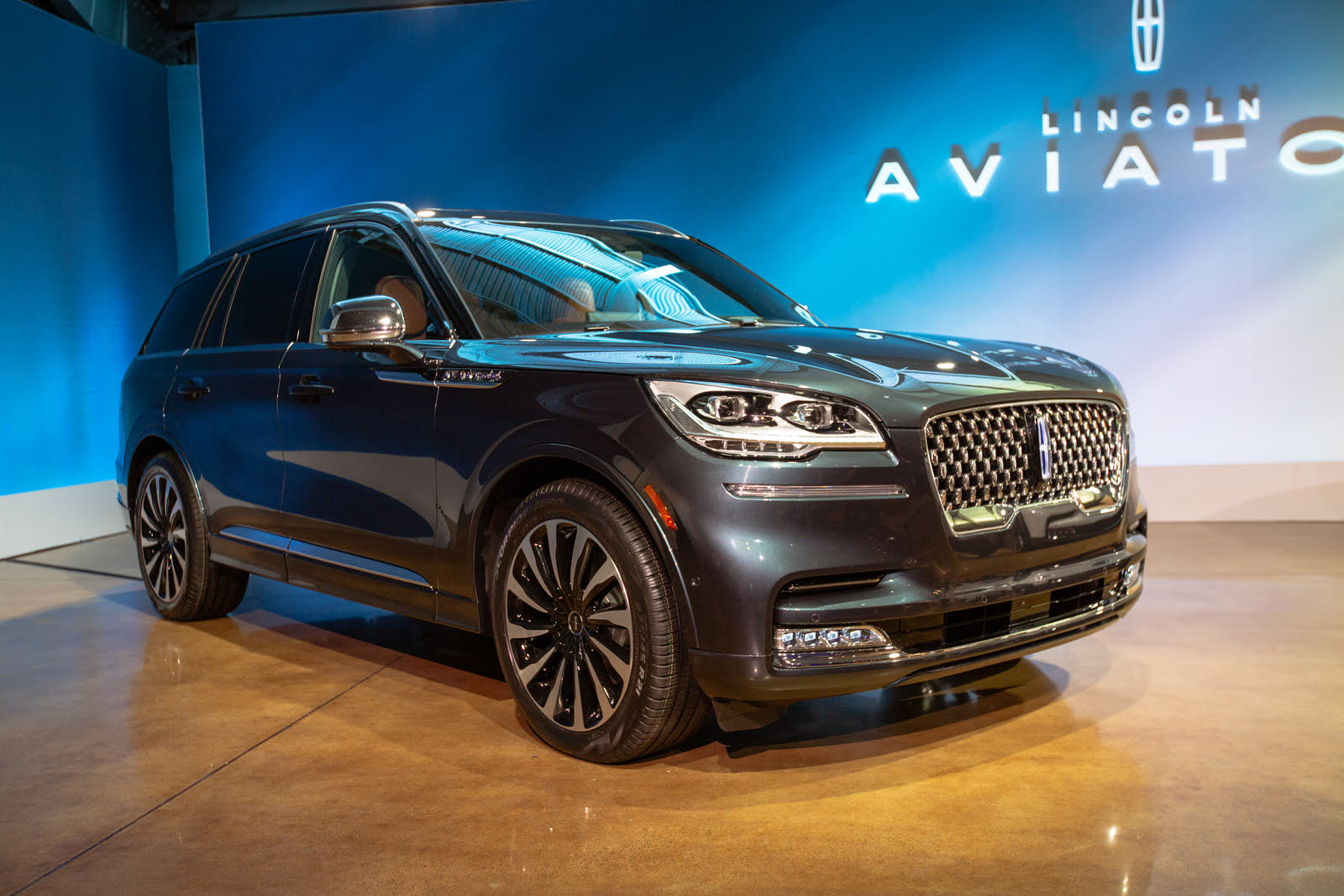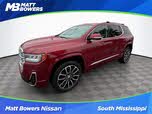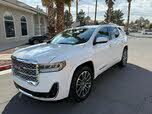2020 Lincoln Aviator vs 2020 GMC Acadia
Overview | ||
MSRP | $51,100 | $29,800 |
Average price | $33,932 | $23,589 |
Listings | ||
Ratings & Reviews | ||
User reviews | ||
Expert reviews | 8.2 out of 10Read full review | 7.0 out of 10Read full review |
Pros & cons | Pros
| Pros
|
Summary | The heyday for Lincoln was more than a half-century ago. Those postwar years of prosperity and optimism were the perfect time for cars like the Continental and others. They delivered comfort and luxury, wrapped in midcentury modern styling. Even as recently as the 1990s, Lincoln was still a popular brand, riding the SUV craze with its Navigator. But after the turn of the century, Lincoln lost its ability to create new designs and looked inward and backward. Sure, retro-themed cars like the redesigned Mustang, PT Cruiser, and Chevy HHR had turned some heads, but none of those came from luxury brands. The BMWs and Mercedes of the world were all looking forward and pushing the envelope for contemporary automotive design. Meanwhile, Lincoln offered the MKX, which was based on the Ford Edge and featured ’66 Continental styling. Neat in a vacuum, but off-base compared to the modern luxury market. This experimental phase with various retro looks coincided with the move to the MK-# alphabet-soup naming convention and big improvements in the Ford lineup, where top-end trims of the Fusion overlapped with an entry-level trim of the MKZ. The combination left Lincoln a confusing, anonymous afterthought in the modern luxury game. But Lincoln is finally ready to change all that. It has a new cohesive design language, its focus is once again on luxury, and the three-letter naming convention that never meant anything to anyone other than Lincoln marketers is gone. The brand led with the 2017 Continental and 2018 Navigator, which are each impressive in their own right. But the company's lineup is growing and now includes the all-new 2020 Lincoln Aviator. Named after a luxury variant of the 2002-2005 Ford Explorer, this new Aviator is also based on the contemporary Explorer platform, but it's a luxury vehicle in its own right. Much of the success of the Lincoln brand may hinge on this midsize, 3-row luxury SUV, so you need to consider its competition, such as the Audi Q7, Infiniti QX60, and all-new Cadillac XT6. Read on to learn if Lincoln’s take on luxury will stand out in a crowded competitive field. | Long story short, as a friend of mine likes to say, GMC screwed up. This is just my opinion, of course, but when GMC redesigned the Acadia for the 2017 model year, the SUV shrank in size and switched to a softer look in order to plug a huge hole in the Buick-GMC SUV lineup. Fast-forward to 2020, and GMC may have decided this move was a bad idea. As part of a refresh, the new Acadia adopts bolder styling and adds a new AT4 trim level with greater off-roading capability. Additional changes include the availability of a new turbocharged four-cylinder engine, a new nine-speed automatic transmission, and new and updated technology. These revisions do help the Acadia to better stand out in what is now an ocean of midsize SUVs, from Hyundai to Kia and Honda to Toyota, and everything in between, but it’s up to GMC to make people aware of this fundamentally good, but oh-so-vanilla SUV. And the company must also address the Acadia’s questionable value. |
Video | No video found | |
Popular Features & Specs | ||
Engine | 3.0L 400 hp V6 | 2.5L 193 hp I4 |
Drive Train | RWD | FWD |
Seating Capacity | 7 | 7 |
Horsepower | 193 hp @ 6300 rpm | |
MPG City | 18 | 21 |
MPG Highway | 26 | 27 |
Engine | ||
Engine Name | 3.0L 400 hp V6 | 2.5L 193 hp I4 |
Torque | 188 lb-ft @ 4400 rpm | |
Horsepower | 193 hp @ 6300 rpm | |
Drivetrain | RWD | FWD |
Fuel Economy | ||
MPG City | 18 | 21 |
MPG Highway | 26 | 27 |
Interior | ||
Seating Capacity | 7 | 7 |
Safety | ||
Front Crash Overall | 5 | 5 |
Side Crash Overall | 5 | 5 |
Dimensions & Capacity | ||
Cargo Space | 18.3 cu ft | 12.8 cu ft |
Curb Weight | 4764 lbs | 3923 lbs |
Height | 69.8 in | 66.7 in |
Length | 199.3 in | 193.4 in |
Width | 89.9 in | 75.4 in |
Wheelbase | 119.1 in | 112.5 in |
Maximum Payload | 2078 lbs | |
Number of doors | 4 | 4 |
The 2020 Lincoln Aviator was positioned between the larger Navigator and the compact MKC, later replaced by the Corsair. Lincoln's shift from alphanumeric names to real vehicle names signaled a departure from mimicking imports, showcasing a unified design across its lineup. The Aviator featured a sleek roofline and a low, wide beltline, giving it a boat-like appearance. Inside, the cabin boasted a flowing design with soft-touch materials and elegant seats, hinting at luxury without overdoing it. The Aviator's interior was plush, with leather extending to areas not typically covered, reflecting a commitment to luxury. Unique touches like a panoramic moonroof and orchestral warning jingles added to its appeal. The Aviator offered five trims, with the Standard trim providing ample features, while the Grand Touring and Black Label trims added luxury and hybrid options.
The 2020 GMC Acadia, positioned as a premium brand alongside Buick, aimed to be more upscale than Chevrolet but not as luxurious as Cadillac. Built on the same platform as the Cadillac XT5, the Acadia came in SL, SLE, SLT, AT4, and Denali trims. The Denali trim, with optional all-wheel drive and a Technology Package, showcased a boxier grille and squared-off headlights, emphasizing its upscale aspirations. Inside, changes were subtle, with new electronic transmission shift switches and open-pore wood trim for Denali models. The cabin mixed soft surfaces with hard plastics, and while controls were logically laid out, the Denali's premium feel was limited to leather upholstery and wood trim. Despite its aspirations, the Acadia's interior didn't fully establish it as a premium choice.
The 2020 Lincoln Aviator came standard with a twin-turbocharged 3.0-liter V6 engine, producing 400 horsepower and 415 pound-feet of torque. The Grand Touring trim enhanced this setup with a 100-hp electric motor, resulting in a combined 494 hp and 630 lb-ft of torque. Both powertrains used a 10-speed automatic transmission, with the base V6 offering rear-wheel or all-wheel drive, while the plug-in hybrid was all-wheel drive. The Aviator's driving experience was smooth, with light steering and cushioned brakes, drawing comparisons to the Rolls-Royce Cullinan for its refined dynamics. The PHEV's electric power smoothed out the driving experience, and the Excite drive mode added a touch of dynamism. Fuel economy for the RWD Aviator was 18 mpg city, 26 highway, and 21 combined, while the PHEV offered a combined 23 mpg with a 21-mile electric-only range.
The 2020 GMC Acadia offered three engine options: a 193-hp 2.5-liter four-cylinder, a 230-hp turbocharged 2.0-liter four-cylinder, and a 310-hp 3.6-liter V6. All engines were paired with a nine-speed automatic transmission, with front-wheel or all-wheel drive available, except for the AT4 trim, which had a dual-clutch AWD system. The V6 and nine-speed automatic provided smooth power and up to 4,000 pounds of towing capacity. The Acadia's ride and handling were finely tuned, offering a predictable driving experience, though it lacked memorable driving character. The test vehicle's powertrain included fuel-saving features like automatic engine stop/start and cylinder deactivation, with an EPA rating of 21 mpg combined. The Acadia's driving dynamics were competent but unremarkable.
The 2020 Lincoln Aviator, with its three-row seating, competed with models like the Audi Q7 and Cadillac XT6. The optional second-row captain's chairs were praised for comfort, while the power-closing third row was best for short trips with adults. Cargo space was 77 cubic feet with the second and third rows folded, comparable to the XT6. The Aviator's interior featured complex seat controls and unconventional door handles, which could be confusing. The 30-way seats with massage function were a highlight, but the door-release function was unnecessarily complicated, raising concerns about usability in emergencies.
The 2020 GMC Acadia offered seating for five, six, or seven passengers, with the Denali trim providing six-passenger seating with second-row captain's chairs. The front seats were wide and supportive, with heating and ventilation, ideal for long trips. The second-row captain's chairs were comfortable, with rear passengers having access to air conditioning vents, USB ports, and a power outlet. The third-row seat was roomier than expected, though cargo space was limited to 12.1 cubic feet behind it. Folding the third row expanded cargo space to 41.7 cubic feet, and with the second row folded, it offered 79 cubic feet, average for the segment. Interior storage improved with new electronic transmission controls and a reconfigured center console.
The 2020 Lincoln Aviator featured the Sync 3 infotainment system with a 10.1-inch touchscreen in a landscape layout, offering seamless integration with Apple CarPlay and Android Auto. The fully digital instrument panel and head-up display provided a wealth of information in a minimalist manner, enhancing the driving experience.
The 2020 GMC Acadia came equipped with essential infotainment features, including Bluetooth, Apple CarPlay, Android Auto, and a 4G LTE WiFi hotspot. The 8-inch touchscreen offered a higher resolution and improved user experience. The test vehicle included navigation and a Bose premium sound system, with voice recognition technology performing well. Additional tech upgrades included USB-C ports, a wireless charging pad, a high-definition surround-view camera, and a rear camera mirror, providing a wide-angle view for better visibility.
The 2020 Lincoln Aviator came with a comprehensive suite of safety features, including front and side-impact airbags, traction control, and a tire pressure monitoring system. The Lincoln Co-Pilot360 suite offered forward-collision avoidance, lane-departure warning, adaptive cruise control, and automatic high beams, along with blind-spot monitoring and a head-up display.
The 2020 GMC Acadia's safety features included a rear-seat reminder system and Teen Driver technology. Standard GMC Connected Services offered automatic collision notification and SOS emergency calling. The base Acadia SL and up included blind-spot and rear cross-traffic warning systems. However, advanced safety features like forward collision warning and automatic emergency braking required upgrading to higher trims. The NHTSA gave the Acadia 5-star ratings in most assessments, with a 4-star rollover resistance rating. The IIHS provided incomplete data, with high marks in some tests.
CarGurus highlights

According to CarGurus experts, the overall rating for the 2020 Lincoln Aviator is 8.2 out of 10, while the 2020 GMC Acadia scores 7.0 out of 10. Based on these ratings, the Lincoln Aviator is the recommended choice, offering a more luxurious experience, advanced technology, and superior performance.
Choose the 2020 Lincoln Aviator if:
Shop Now- You prioritize a luxurious interior with high-end materials and unique features like orchestral warning jingles.
- You want a powerful engine with a plug-in hybrid option for enhanced performance and fuel efficiency.
- You value advanced safety features and driver-assistance systems as standard equipment.
Choose the 2020 GMC Acadia if:
Shop Now- You need a versatile SUV with multiple seating configurations and ample cargo space for family trips.
- You prefer a straightforward infotainment system with essential connectivity features and user-friendly operation.
- You seek a reliable and predictable driving experience with a choice of three engine options.

By: CarGurus + AI
At CarGurus, our team of experienced automotive writers remain at the heart of our content operation, conducting hands-on car tests and writing insightful guides that are backed by years of industry experience. To complement this, we are harnessing AI to make our content offering more diverse and more helpful to shoppers than ever. To achieve this, our AI systems are based exclusively on CarGurus content, ratings and data, so that what we produce is both unique to CarGurus, and uniquely helpful to car shoppers.























